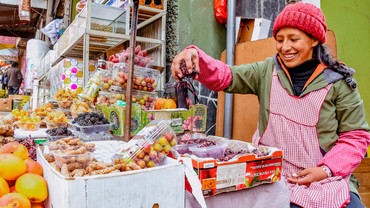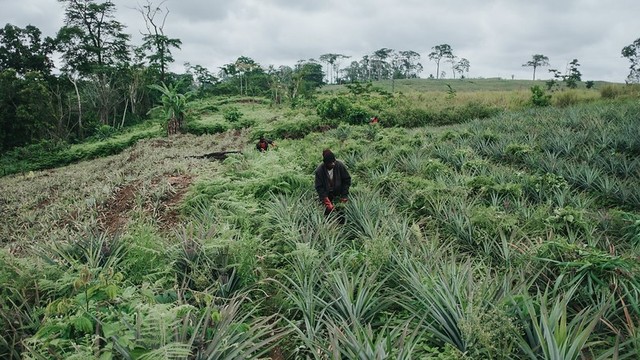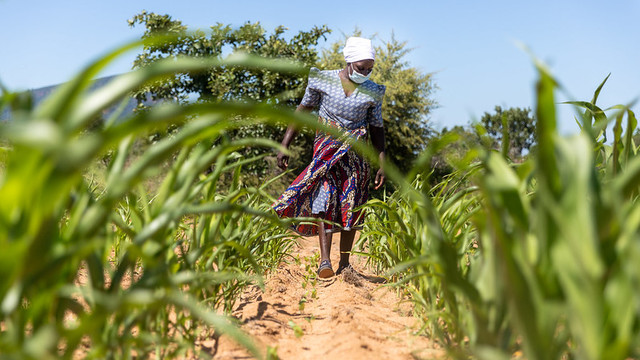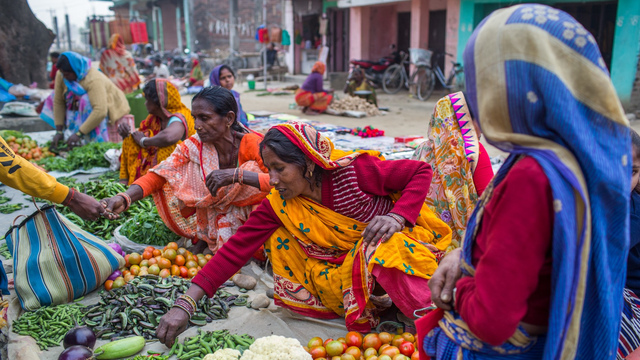Creating knowledge and supporting action: citizen-generated evidence from food diaries in Uganda
Citizens in Western Uganda are using food diaries to generate data on food consumption – helping them understand their own diets and advocate for a better food system.


Traditional Kabarole food laid out for guests near Fort Portal (Photo: Alejandro Guarín/IIED)
What if you were to record everything you ate in one week?
Think about it. Not just about the logistics of writing everything down. Or about the challenge of accurately recording what went into your lunch. Think about how you’d feel at the end of the week having that document in front of you. Would you feel good about your diet? Would you be concerned? Curious? Would it make you want to change anything about the food you eat?
This is exactly the challenge that our partner, the Kabarole Research and Resource Centre (KRC), posed to people in Fort Portal, Western Uganda. KRC is a partner of Sustainable Diets for All (SD4All), a Hivos and IIED programme that supports civil society organizations to advocate for better food production, trade and consumption.
Citizen-centric
Understanding food consumption patterns is often based on ’experts’ extracting data from ’subjects’. Those who provide the information usually have no role in interpreting it, and have no idea how it’s used or by whom. Moreover, decision makers use this information to make assumptions about people’s needs and concerns, often resulting in a mismatch between policies and the reality of the poor.
The use of citizen-generated evidence, such as food diaries, aims to change this. We aim to involve people not just as data sources, but as stakeholders and agents of change.
Citizens of Fort Portal, trained and supported by KRC, not only collected their own data but also worked with KRC to interpret the information. The food diaries were a source of evidence, an opportunity for reflection and a prompt for a discussion about the drivers of food choice.
Food diaries as windows into people’s food – and lives
The research was carried out in and around Fort Portal, a rapidly growing urban centre in the Rwenzori region. The region has a dynamic agricultural economy and is a net exporter of food – both to other parts of Uganda and to neighbouring countries – but food is not always accessible to the locals of Western Uganda. Malnutrition and child stunting remain widespread.
Through the food diaries, KRC wanted to understand more about these trends – particularly around the diversity of diets – and to promote a discussion about the possibilities and constraints of the local food system.
Around 200 urban households were randomly selected to participate. KRC and their volunteers trained one person in each household—usually a woman – to fill out the diaries. Following the first round of analysis, a sub-sample of 18 households were selected for interview. If the diaries showed what was eaten and when, the interviews helped us understand the why. What are the underlying drivers of food choice? What do people make of their own diets and what would they like to change?
Starchy foods dominate
The food diaries show that diets are built around a small number of recurring items. Ten foods accounted for 60% of all food consumed by the households during the seven days. Seven of these ten items are starchy staples: matooke (plantain), cassava, maize, millet, sweet potatoes, bread and rice. Milk was the one source of animal protein on the list and beans and groundnuts were the two legumes. This list looks distinctly healthy – certainly compared with the UK’s penchant for ultra-processed foods.
But diets are carbohydrate-heavy: households tend to rely on two or three starchy staples. Fresh fruits and vegetables, as well as key sources of protein like meat, eggs and dairy, appear far less regularly.
Most households regularly consume only three or four of the 12 food groups used for assessing the widely used household dietary diversity score. Without diversity, diets are less likely to provide the nutrients needed to stay healthy – so for the citizens of Fort Portal, these are challenging findings. The food diaries data can identify particularly vulnerable households, such as those whose diets are dominated by five or less foods.
Unpacking the numbers
Follow-up interviews gave us the stories behind the numbers. People are very aware of what they’re eating and have a clear sense of what they lack and why.
Cash, not knowledge, is what’s limiting a more plentiful or varied diet. Many of these urban households still have access to plots of land or family living in rural areas. When cash is scarce, some of the diversity in their diets often comes from what they can grow or what their relatives give them.
Later this year, we will be bringing the results back to the participating households to ask them how they think this data should be used, and to design an advocacy agenda with them. We will discuss issues such as access and affordability of fruits, vegetables and protein. Decisions on what needs to change locally will need to be made in partnership – with citizens that completed the food diaries leading the way.
At the recent conference ‘Towards zero hunger: partnerships for impact’ hosted by Wageningen University & Research (WUR), Hivos and IIED highlighted the importance of citizen involvement in policymaking using examples from the discussion paper 'Citizen-generated Evidence for a More Sustainable and Healthy Food System'. We also shared findings from the food diary research. The key event outcomes are available on the Sustainable Diets for All website.




